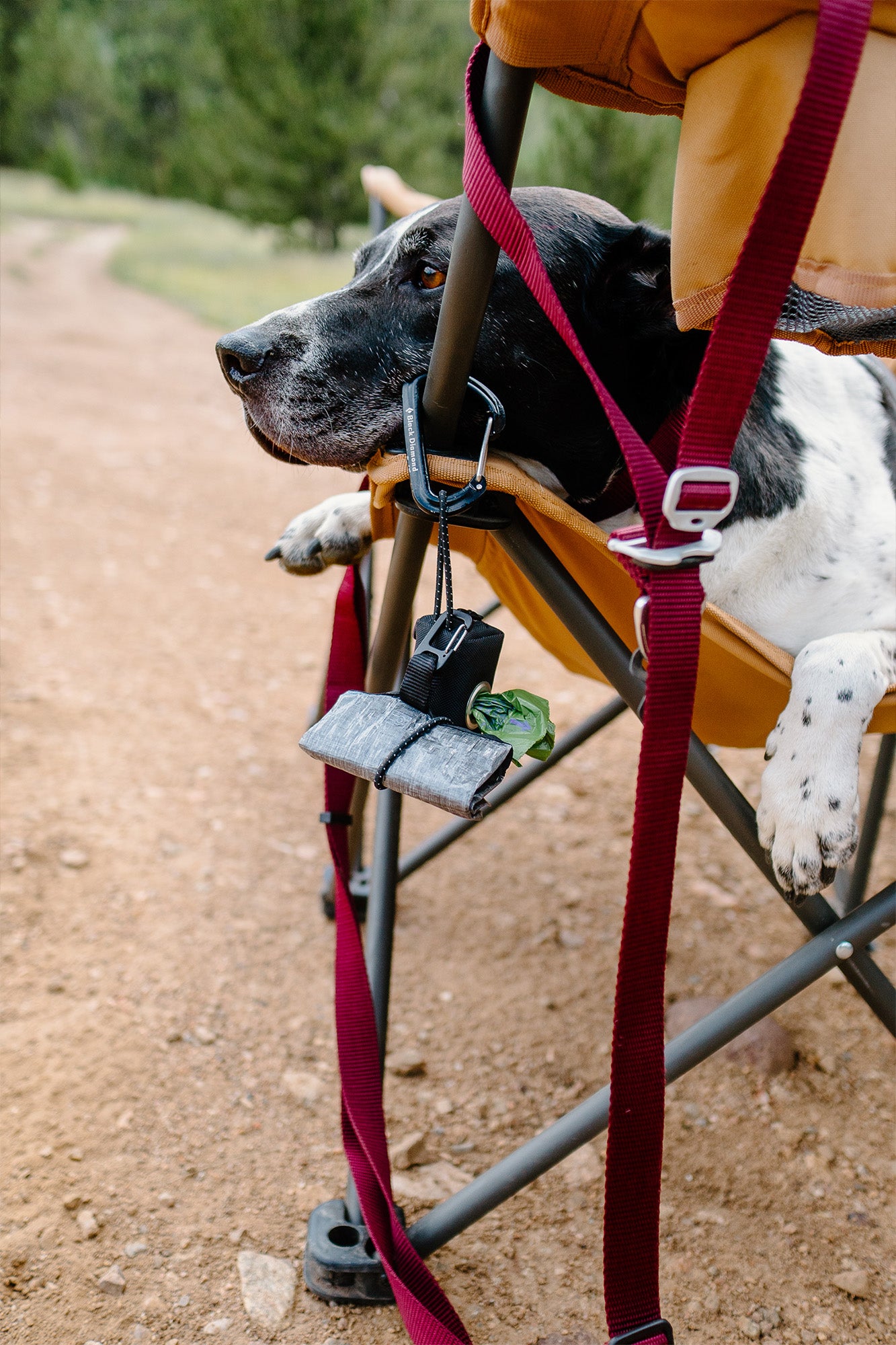If your dog hates the vet, you are not alone. The vet is somewhere that causes stress for many dogs, even if introduced properly from a puppy. In general, most visits include their space being invaded by a stranger and also sometimes include pain in the form of shots or a physical exam. I am going to share what I have learned along the way about the vet and offer some insight as to how I am now able to safely take Kane to the vet.
Last week we had to go to the emergency vet, which is a new vet to him. Because it wasn’t his usual vet I took extra precautions and really advocated for him in hopes that we wouldn’t ruin the good streak we have going. After the visit the vet profusely thanked me for being so prepared and putting so much work into his training. Our regular vet also says something similar to me everytime we go but hearing this statement on a very stressful day was all the affirmation I needed to know I did the right thing.
Okay let's break this down into a few sections:
Making the vet a less scary place…
If you have a dog from a puppy it might make this easier because they don’t have a previous negative experience to overcome. Overall the goal is to prevent any negative experience because those are so hard to come back from. First of all, I personally prefer vets that label themselves as ‘Fear Free’. In my, albeit limited, experience these vets generally have slightly more training with fearful dogs and are overall more understanding to the level of fear. But, a good vet is a good vet regardless of their label. If you are able to, especially with a puppy, it can help to take them for check-up only exams (with no shots) or just stop by and say hi to the receptionist. I personally never did this with Kane because no amount of counterconditioning or treats will make him like the vet.
When you are in the vet office some helpful things to think about are: not backing your dog into a corner, not putting them up on an elevated table unless absolutely necessary and not letting them take your dog away from you unless absolutely necessary. I will go into more detail below about these things. Kane was a shelter dog and already didn’t like the vet when we got him but I also did all these things early on which resulted in extreme fear of the vet.
I also want to acknowledge that for many dogs, including Kane, the vet will ALWAYS be a scary place. But it is a necessary place, so we use all the other steps below to minimize stress, increase efficiency so we aren’t there as long and make it as positive as possible.
Advocating for your dog…
This is easier said than done but vets genuinely seem to appreciate the ‘extra information’ I give them. I also present them with the worst case scenario, I don’t beat around the bush because if he reacts negatively it will mean he is over the threshold which means it has the chance to be the worst reaction I’ve ever seen. For this reason, I say he doesn’t like strangers or unfamiliar dogs. I have used the word aggressive too if my point isn’t getting across. I try to stay away from broad statements like “she/he is dog reactive”; tell them exactly what is going to happen if they encounter another dog barking at them inside the waiting room. For example, instead of saying she is dog reactive, say: she will bark, snarl, or lunge at another dog that approaches her. If you know your dog has certain areas that are very sensitive to touch, make sure you tell your vet that.
This entire process starts when I call to schedule an appointment. Even with his regular vet, I confirm that they know we prefer to see one specific vet and use the comfort room, which has its own entrance and isn’t a typical vet exam room. It has carpet and a couch and is quiet. I also confirm what notes they have about his behavior. For a new vet, such as the emergency vet, I confirm they are comfortable with his issues prior to arriving. I make sure to tell them he will be muzzled and can be handled by me for an exam.
When we arrive at the vet I leave him in the car while I check in. If they are ready to see us immediately I will bring him in, sometimes through a side door if they offer. Our regular vet has a completely separate entrance straight into a private room where he gets seen. If they aren’t ready for us I ask if he can wait in the car; they have never said no to this request and usually just call me when they want us to come in.
Once in the room, you usually have a break between the vet tech and the vet. I find running through some of his 'fun' tricks loosens him up a little bit. I have also talked to people who bring a place cot or mat for their dog to lay on as a safe/relaxation spot. I think this is genius and I will definitely be trying it. This can provide a clear boundary of when the vet can touch him and when she cannot. When the vet comes in, I generally reiterate EVERYTHING. I have found that the muzzle is usually a good cue for them to ask about his needs too. I am very straightforward in that I can get him through any exam if I hold him. Usually, vets are very appreciative of this because they are able to get a much more thorough exam than if he was flailing and panicking. We had a vet in the past that insisted all dogs do better without their owner there and that he should be taken into the back. Unfortunately, I learned this lesson the hard way and he tried to bite a vet tech while in the back. They told us they couldn’t treat him anymore and it was a blessing in disguise because we found a better vet as a result. I don’t doubt that some dogs do better without their owners and some dogs are indifferent (like Nyx), but I know Kane does not. I will never let a vet take him away from me again unless it’s a life-or-death situation at which point I would probably still try to help them at least get him sedated. If I did, he would immediately think I didn’t have his back and that he needs to protect himself. This is not the mentality I ever want him to have. I want him to know I will protect him and understand that I won’t let anyone do anything that isn’t necessary for his health. I also know I can handle him better than anyone else can, meaning they can get the best exam possible. I believe most people reading this blog post aren’t your average pet owners and know their dogs. So I believe you are entitled to ask for the same thing, that you remain with your dog the entire time. As a side note I will add, I am not against vets taking dogs without the owner but I think it should be on a case-by-case basis. Nyx has been to the vet without me many times (she was a puppy during COVID) and has never had an issue with the vet. If your vet insists you be separated from your dog and this feels wrong to you, I promise there are better vets out there.
Last year when Kane had a mast cell tumor removed I got to sit with him until the pre-sedation kicked in and then I carried him onto the operating table and stayed until he was fully sedated. I was also allowed to pick him up much sooner after his surgery than usual to minimize his stress and discomfort. I acknowledge that this may take more time and effort for the staff but they acknowledge that I am making their life easier in the long run. So, I am here to tell you that understanding, considerate and kind vets do exist.
Other things to consider that may be a trigger for some dogs and helpful for other dogs that you can request (some of these are Kane specific and others are suggestions from other people on Instagram):
- Do/Don’t knock before entering the exam room
- Do/Don’t baby talk to him when you enter the room or during the exam
- Do/Don’t back him into a corner
- Do/Don’t put him on an elevated surface
- Do/Don’t pet him during the exam
- Do/Don’t feed him treats & PB
- Do/Don’t stand over him
- Do/Don’t sit on the ground as we talk
- Do/Don’t get on his eye level and make eye contact
- Do/Don’t approach him head on
- Do/Don’t approach him from behind

The Lifetime Bowl and Lifetime Pouch are the perfect companions for any of our leashes.
I know some people like to take their multiple dogs to the vet together but I personally find it easier to take Kane alone or schedule them back to back and rotate who is in the car. First of all, he deserves my full attention which he wouldn’t have if social butterfly Nyx was in the same room. I also wouldn’t want to risk him lashing out at Nyx if he was stressed. Finally, while unlikely I wouldn’t want Nyx to have a negative association with the vet because she senses Kane’s stress.
Things I have taught to make the vet easier…
I think the biggest change in our vet experience is trust. Training with your dog in general builds trust. Kane and I have come a long way in this journey, from climbing on jungle gyms to build confidence, to doing canine conditioning and increasing his trust in his own body and me, to protecting him from strangers petting him to intercepting off-leash dogs…it all helps. Not letting the vet take him from me has also made him understand that I will communicate for him and he doesn’t need to.
Kane is extremely food motivated which helps significantly. I reward and feed him for the entire physical exam, as long as he will take it. I bring high-value treats and peanut butter, and pull out ALL the stops. If he stops taking food I know this is a sign he is very uncomfortable. If they are doing something that isn’t completely necessary I ask them to take a break. If it is just part of the necessary exam I continue to reward him verbally then jackpot reward him when it is over.
I have taught him a few commands that have helped for physical exams, photos below. One is a chin rest. This keeps him still and looking at me during the exam and vaccines. It is also very helpful if they are looking at his chest or front legs because I can elevate his head. The other is to lay on his side. He still doesn’t like his command, even at home, but it has come in useful for an exam when he had a lump on the underside of his chest that was difficult to examine while he was standing. I have also gotten him comfortable with mouth handling so I can take his muzzle off and hold his mouth open for dental exams. I also talk to him CONSTANTLY during the physical exam. CONSTANTLY praising him and reassuring him. This works really well for him!
There are many aspects of the vet that you can practice at home. You can practice each part of the physical exam on your dog to get them more comfortable with joint manipulation, pressure points for shots, having their temperature taken, listening to heart & lungs, mouth exams, eye & ear exams, and everything in between. Pay attention next time you go to the vet and start slowly getting your dog comfortable with those motions at home.
If you are not comfortable with letting your dog get uncomfortable at the vet I suggest looking into cooperative care and finding a vet that supports this technique. It is a fantastic training mentality and process that allows the dog to control the pace and intensity of the exam. I have seen some owners and dogs, on Instagram, have incredible success with it. It is a long process which is what deterred me, sometimes the vet is absolutely necessary and I don't want to have it put off because he isn't ready to advocate for himself. I advocate for him and we get through it together.
My anxiety definitely triggers Kane’s anxiety and the vet makes me anxious…so it’s a vicious circle. It has taken me a long time to feel comfortable advocating for him but this has helped my anxiety significantly. I find that explaining his issues to a complete stranger is much easier than to a family member or friend. It is like a weight off my shoulders so I can go in with a plan and I stick to the plan, it keeps me as calm as possible.
The muzzle…
The single greatest thing I ever did for Kane was muzzle-train him. Even if you don’t think your dog would ever bite out of fear, it is worth considering for the vet. The vet can be more stressful than any other place for some dogs and they therefore might react the worst you’ve ever seen them react. The muzzle protects the vet and you/your dog. A vet that is treating a fearful but muzzled dog is much more likely to do a thorough physical exam than if they aren’t muzzled. Some vets will also strongly recommend or require a muzzle if your dog is acting fearful. The ones they have are sleeves that go around their nose and make it impossible to pant. This will make many dogs panic even more. If you go in with your dog muzzled in a muzzle they are already comfortable wearing it will be a much easier process.
The muzzle also serves as a visual cue to other people in the vet. It tends to make people and dogs keep their distance in the waiting room. You may also encounter multiple vet techs in addition to you the vet, they might not have all the information you gave the front desk staff or the vet and the muzzle usually prompts them to ask for more information.

Medication…
DO NOT BE ASHAMED TO USE MEDICATION TO GET THROUGH VET VISITS. It is much more common than you think to be offered medication by your vet. I used to be offended when they asked if I wanted to try it but I realized they are only doing it to make it easier for everyone involved. They are trying to make you and your dog as comfortable as possible so they can do their job without having to skip steps. I haven’t used it with Kane other than using a pre-sedative before his surgery but that doesn’t mean I wouldn’t consider it in the future especially if he had an injury or was in pain. It is a short-term dose that will not affect your dog long-term, it will just take the edge off and allow them to relax a little bit. Also remember, if you are stressed your dog picks up on that. If you can help them relax a little bit, chances are you will be more relaxed too.
Post vet...
Now it's all over with until next time. Maybe it was a total failure, maybe it was a huge win, regardless of how it went, take time to decompress - both you and your dog. After a vet visit Kane is wiped out for the whole day. It requires a lot of impulse control and brings on a lot of stress, these are both mentally exhausting for a dog. Maybe don't head straight to a busy park or trail, head home and play with their favorite toy or make them delicious kong.























